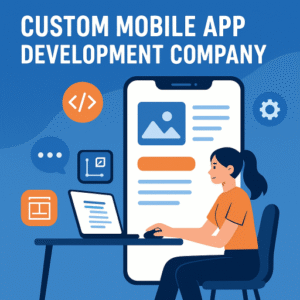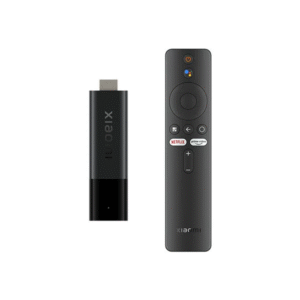In today’s digital-first economy, data has become the new fuel powering businesses across industries. Every company, regardless of its size, needs access to accurate and real-time information to stay competitive. Whether it’s monitoring competitor pricing, analyzing customer sentiment, or discovering market trends, the demand for data is higher than ever.
This is where web scraping services come in. They enable businesses to automatically collect structured data from websites, turning scattered information across the internet into actionable insights. In this article, we’ll explore what web scraping services are, how they work, why they matter, and how businesses can use them effectively.
What Is Web Scraping?
Web scraping is the process of extracting information from websites in a systematic and automated way. Instead of manually copying and pasting data, web scraping tools or services collect large volumes of information in minutes.
For example:
-
An e-commerce retailer can scrape competitor websites to track prices in real-time.
-
A market research company can scrape job portals to analyze hiring trends across industries.
-
A real estate firm can scrape property listing websites to monitor availability, pricing, and demand in different locations.
At its core, web scraping is about converting unstructured online data into structured datasets (such as Excel files, CSVs, or databases) that can be analyzed and used for decision-making.
How Web Scraping Services Work
While the idea sounds simple, the execution requires technical sophistication. Here’s how a typical web scraping process works:
-
Sending a Request – A scraper tool sends an HTTP request to a website’s server, similar to how your browser does when you open a page.
-
Parsing the HTML – Once the server responds with the web page, the scraper parses the HTML code to identify specific pieces of data, such as product names, prices, or reviews.
-
Extracting Data – The desired data is then extracted and stored in a structured format like JSON, CSV, or directly into a database.
-
Cleaning & Organizing Data – Raw scraped data often requires cleaning (removing duplicates, irrelevant information, or formatting errors).
-
Delivery – Finally, the cleaned dataset is delivered to the user or integrated into business systems, dashboards, or analytics tools.
Most web scraping services use programming languages like Python, JavaScript, or PHP, along with frameworks such as BeautifulSoup, Scrapy, Puppeteer, or Selenium. However, businesses that don’t want to deal with coding can rely on professional scraping service providers who handle the entire process end-to-end.
Why Do Businesses Use Web Scraping Services?
Here are the top reasons why companies invest in web scraping:
1. Competitor Price Monitoring
Retailers and e-commerce businesses scrape competitors’ websites to track pricing strategies and adjust their own prices accordingly. For example, Amazon sellers often use scraping tools to stay competitive in a highly dynamic market.
2. Market Research and Trend Analysis
Companies scrape online forums, review sites, and social media platforms to understand customer behavior, preferences, and pain points. This data helps in launching better products and campaigns.
3. Lead Generation
Web scraping enables businesses to gather leads from directories, job portals, and professional networks. For instance, a B2B company can scrape contact details of decision-makers in specific industries.
4. Real Estate Data Aggregation
Property listing websites can be scraped to analyze property availability, rental prices, and buyer demand across regions.
5. Travel and Hospitality Insights
Travel agencies use scraping to monitor airline fares, hotel availability, and seasonal demand fluctuations.
6. Financial Data & Investment Intelligence
Investors and financial analysts scrape stock market data, company announcements, and news sources to make data-driven investment decisions.
Benefits of Using Web Scraping Services
-
Time Efficiency – Automates data collection, saving countless hours of manual research.
-
Scalability – Can collect millions of data points across thousands of websites.
-
Accuracy – Reduces human errors in manual data collection.
-
Real-Time Insights – Provides up-to-date information for fast-moving industries.
-
Cost-Effectiveness – Eliminates the need for large in-house research teams.
Challenges and Considerations in Web Scraping
Despite its advantages, web scraping does come with challenges:
-
Website Blocking – Some websites detect and block scrapers through CAPTCHAs, IP restrictions, or anti-bot measures.
-
Data Quality – Scraped data often requires cleaning and standardization.
-
Legal & Ethical Concerns – While scraping public data is generally legal, scraping copyrighted or personal data without consent can lead to legal risks.
-
Technical Complexity – Websites frequently change their structures, requiring scrapers to be updated.
The solution is to work with professional web scraping services that use proxies, rotating IPs, and advanced scraping technologies to ensure compliance and reliability.
How to Use Web Scraping Services
If you’re considering leveraging web scraping for your business, here’s a step-by-step guide:
Step 1: Define Your Data Needs
Identify what kind of data you want to collect. For example:
-
Prices of competitors’ products.
-
Customer reviews for sentiment analysis.
-
Job listings for workforce trend insights.
Step 2: Choose the Right Web Scraping Approach
-
Do-It-Yourself (DIY) – If you have a technical team, you can use tools like Scrapy, BeautifulSoup, or Puppeteer to build scrapers in-house.
-
Ready-to-Use Tools – Tools like Octoparse, ParseHub, or Apify allow you to scrape without coding knowledge.
-
Professional Services – Outsourcing to companies like Botscraper ensures accuracy, scalability, and compliance without the technical burden.
Step 3: Ensure Compliance and Ethics
Check the terms of service of target websites and avoid scraping personal or sensitive data. Always prioritize ethical use of scraped information.
Step 4: Clean and Organize Data
Scraped data is raw and messy. Use data cleaning tools or hire services that provide ready-to-use, structured datasets.
Step 5: Integrate Data Into Business Systems
Once you have clean data, integrate it into your CRM, ERP, or BI tools to generate insights. For example:
-
Feed pricing data into a dynamic pricing algorithm.
-
Use customer review data for sentiment analysis dashboards.
-
Analyze scraped job data to predict industry growth.
Real-World Example: Web Scraping in Action
Let’s say you run an online fashion store. You want to stay competitive and attract more customers. Here’s how web scraping can help:
-
Scrape competitor websites daily to monitor changes in product pricing.
-
Collect customer reviews from e-commerce platforms to understand trending styles and complaints.
-
Scrape social media hashtags to identify viral fashion trends.
-
Use this data to adjust your pricing, launch trending collections, and target customers more effectively.
As a result, you gain a data-driven edge over competitors, improving both profitability and customer satisfaction.
Future of Web Scraping Services
With the rise of AI and machine learning, web scraping is evolving beyond simple data collection. Intelligent scraping services can now:
-
Classify and analyze data in real time.
-
Integrate with AI-based forecasting models.
-
Automate decision-making processes such as dynamic pricing, chatbot training, and predictive analytics.
In the coming years, businesses that harness web scraping alongside AI will be able to adapt faster to market changes, innovate effectively, and create personalized customer experiences at scale.
Final Thoughts
Web scraping services have become an indispensable tool for modern businesses. From competitive intelligence to customer insights, the opportunities they unlock are endless. However, success depends on how effectively you use these services—defining your goals, ensuring compliance, cleaning data, and integrating insights into decision-making.
If you’re a business leader looking to gain a competitive edge in today’s data-driven world, leveraging web scraping services is no longer optional—it’s a necessity.






